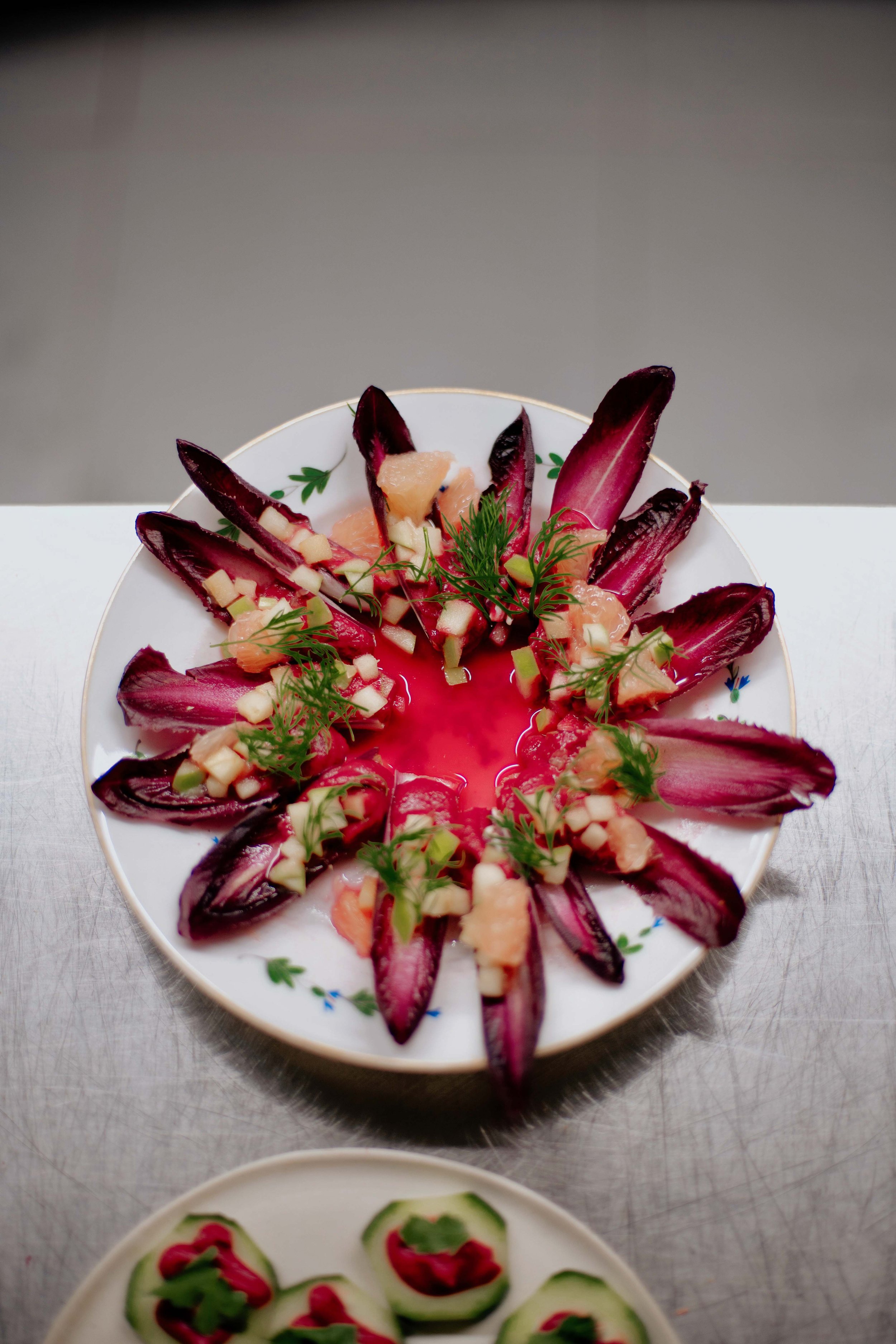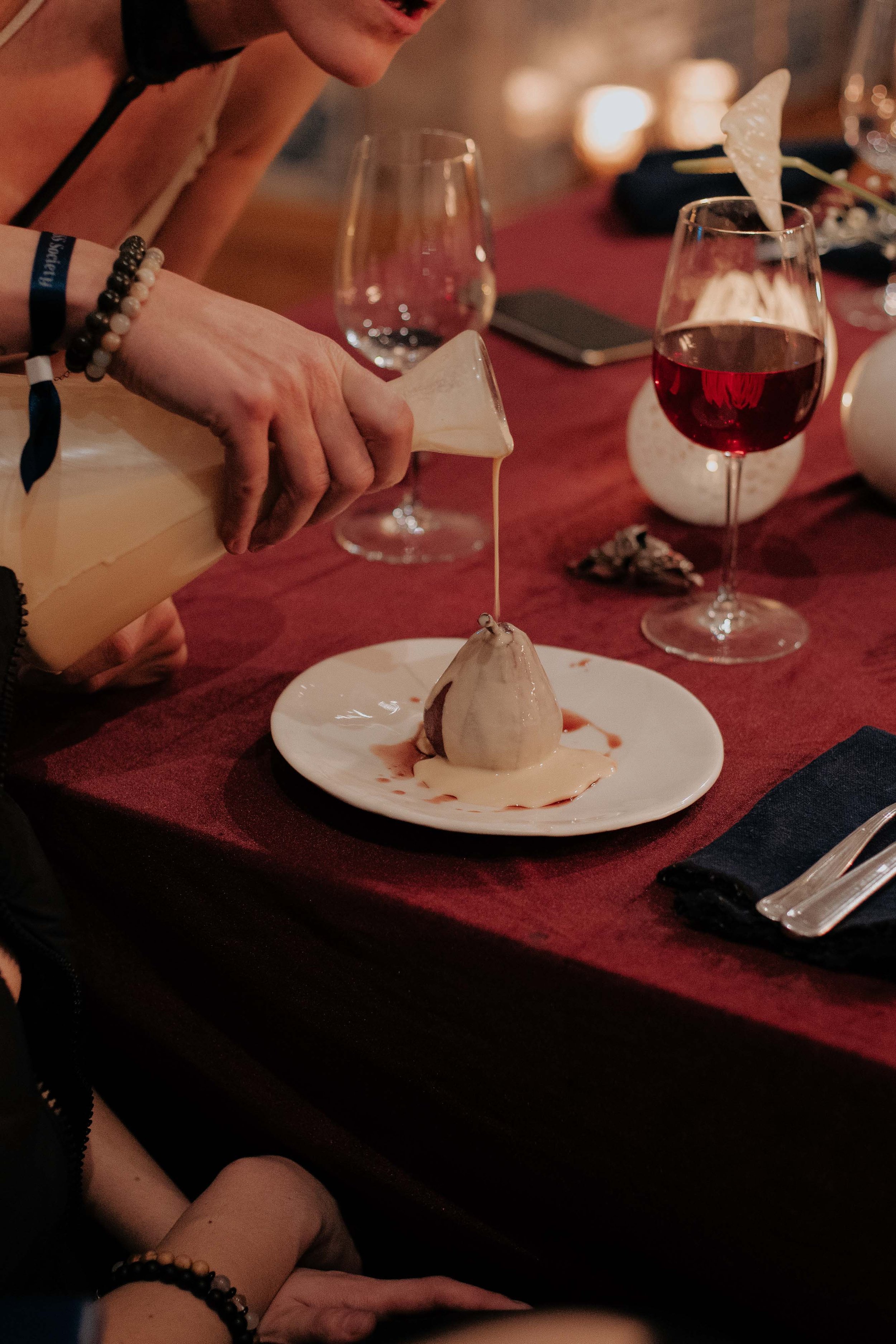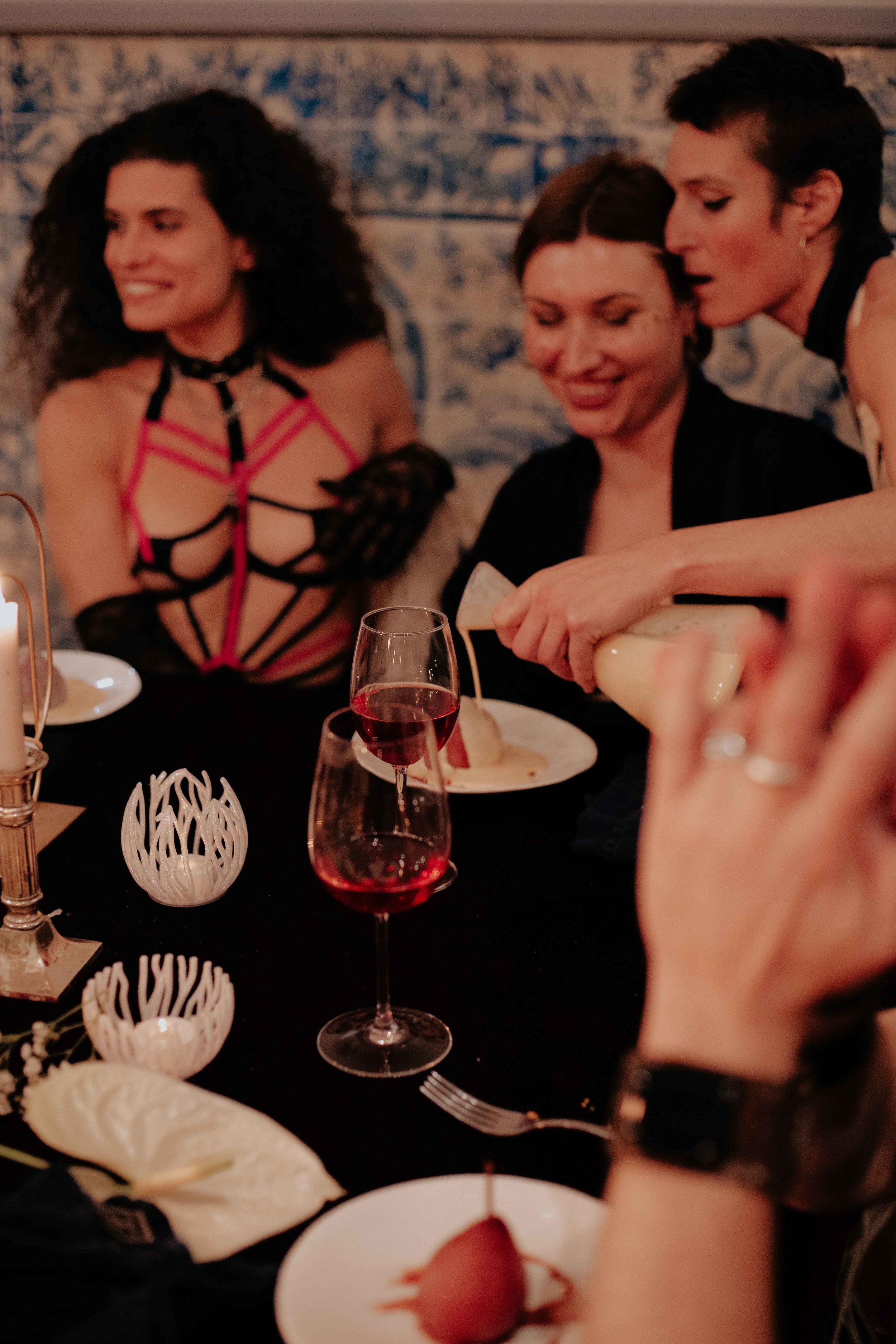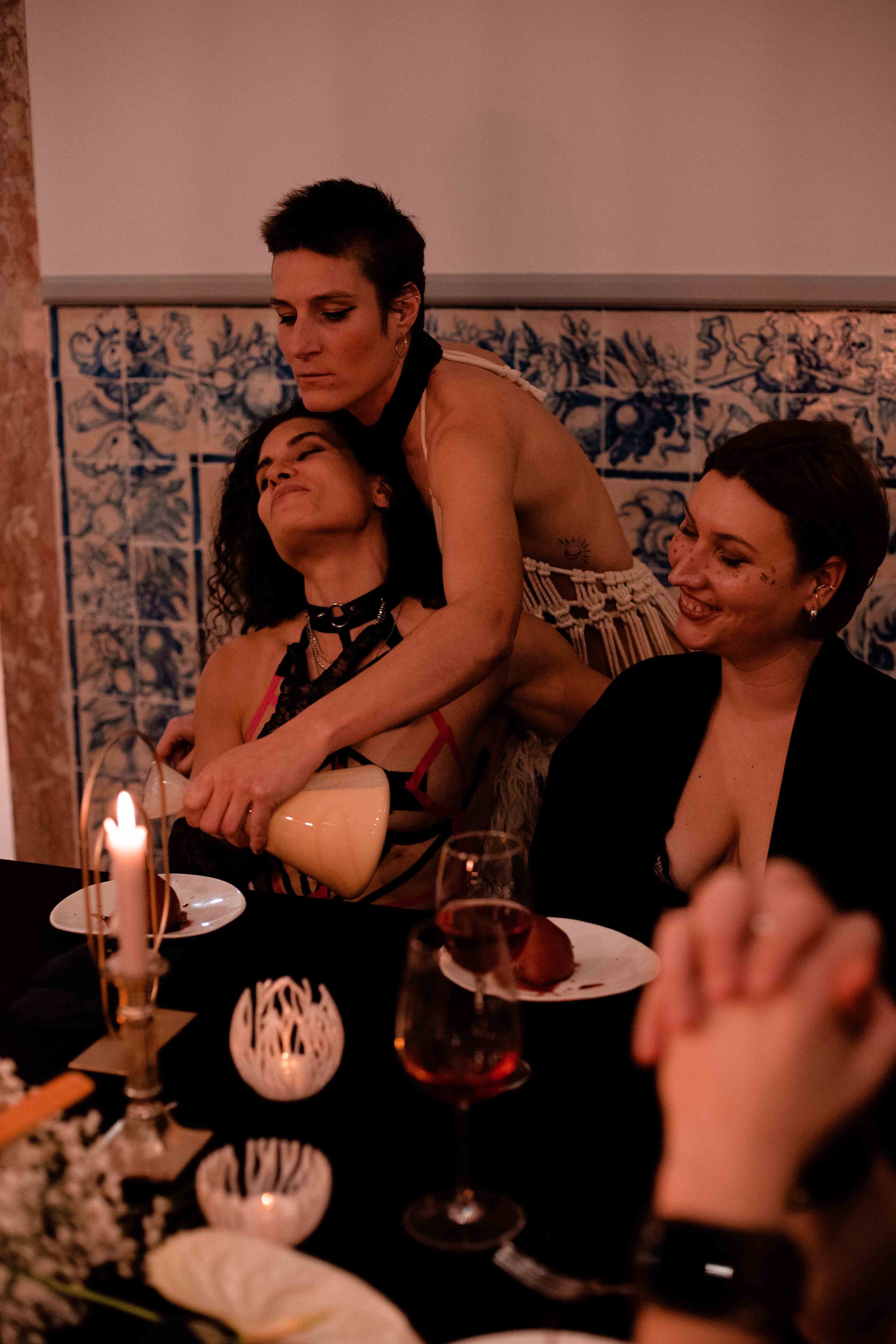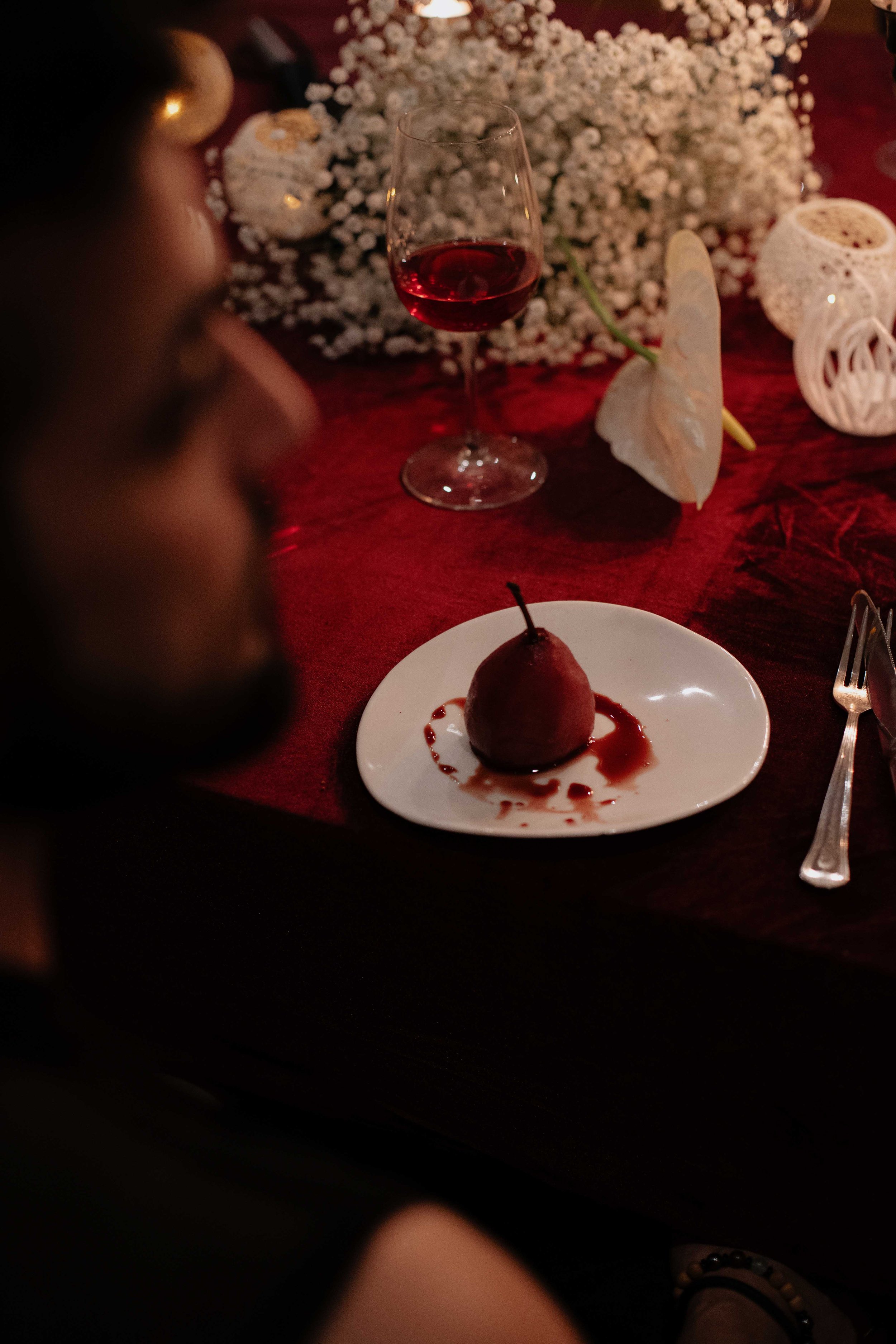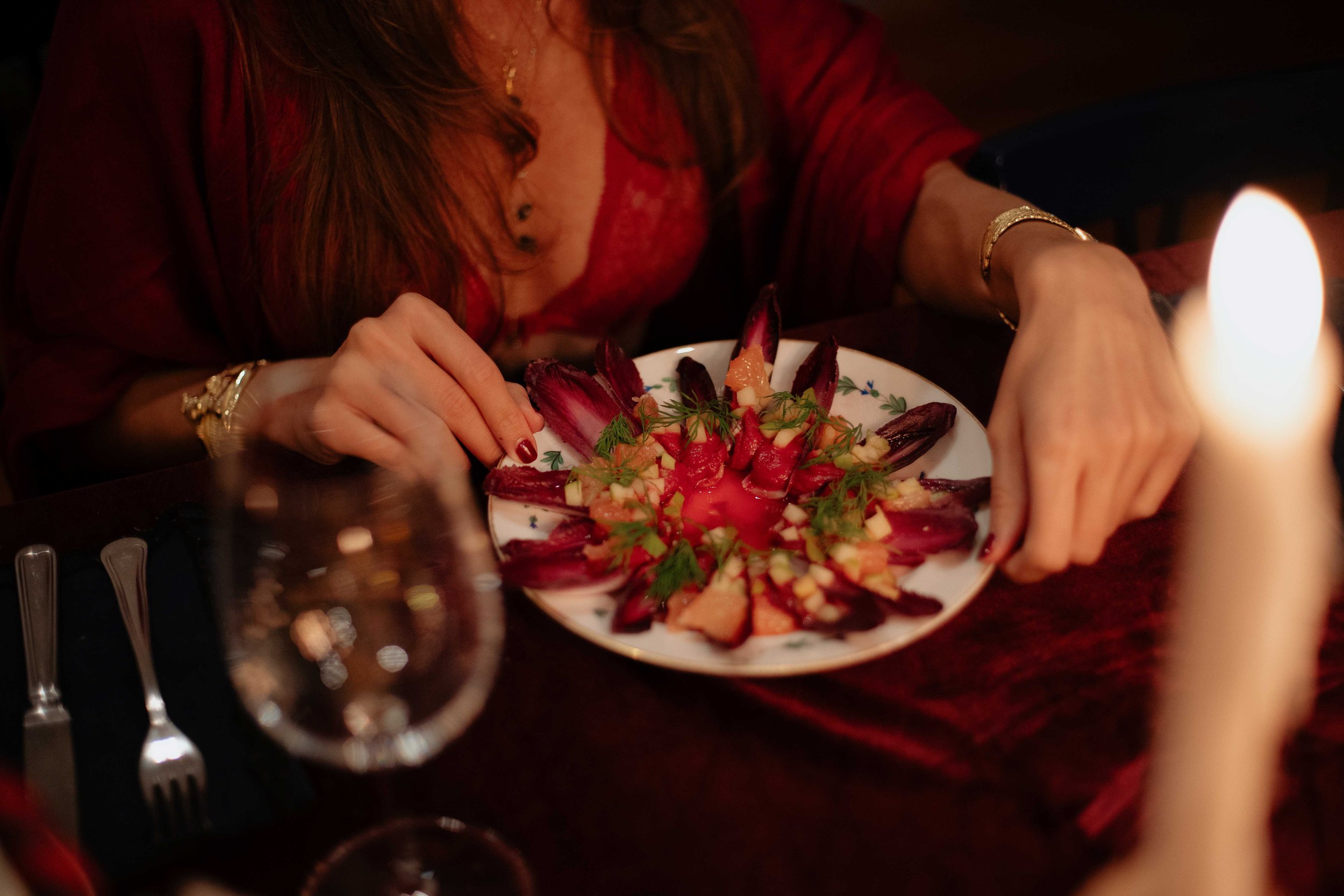
THE EROTICA EXPERIENCE
In May 2021, I began my journey as the chef of A Ilegitima, a house of experiences where I welcomed people around a table, offering dinners enriched with deep conversations. Over time, my cooking evolved into a more holistic expression, adapting to all of my creative whims. I organized private dinners, events, and circles for both women and men.
In September 2021, I was invited by KAMA Lab to create a sensual culinary moment. I was tasked with designing a unique experience for 25 people, held in a house an hour away from Lisbon. The client was hosting a retreat to launch Kama, a sexual education app. The dinner was meant to be a fascinating, whimsical experience, sowing the seeds of Erotica. I selected five dishes and built a storytelling arc around delicacy, spice, indulgence, and food porn. At that point, there weren’t any multi-sensory elements, except for one extraordinary and disruptive moment involving a fish head. I invited the guests to plunge their fingers into it, eat the eyes, and live an unforgettable, visceral experience etched into their memories.
Why Erotica?
I met my husband when I was 20 years old. Back then, my life was filled with drugs and parties but lacked warmth and tenderness. Like many others, I grew up in a household where love was not expressed through hugs or softness. For the first 33 years of my life, I was emotionally dependent, constantly seeking love and warmth, sometimes at the expense of my mental health.
After 10 years in an unfulfilling marriage and having a wonderful child, I reclaimed my freedom, divorced, and re-entered single life. It also marked the end of a difficult postpartum period, and I finally felt like a woman again—ready to be touched, desired, and adored.
At that time, I often fell into various addictions, and sex became a quick and easy surrender to my desires. I lived out my fantasies, often blurring the boundaries between imagination and reality. I oscillated between intense sexual energy and destructive frustration.
I was like a tigress, throwing myself at the men I desired, burning myself out through toxic practices and relationships.
It was during this period that I was first diagnosed from borderline personality disorder, and more recently, bipolar disorder. Conditions I would then overcome. Throughout my life, I had moved from one addiction to another, my relationships marked by tension, disharmony, and violence—both psychological and physical.
In September 2022, I met a yoni healer. The session lasted seven hours, during which I experienced unimaginable pain, starting to cleanse the karmic imprint of all the times I had used sex at my own expense. A week later, I met Uria Tsur, a medicine man who uses voice as a healing tool. For the first time, I had the space to express my sensitivity and fragility in front of 35 people through singing.
This gave me the courage to fully embrace my power. From this courage, Erotica was born.
Photographers :
© Mariana Alegra
© Gabriele Modica
© Julianna Lee
CHAPTER 1 : L’ART DU FOUET
From Pain to Pleasure
From Violent, Abusive Sexuality to Fulfilling, Nourishing, and Deep Sexuality: A Transformative Journey
Transitioning from a sexuality rooted in violence, abuse, and intensity to one that is fulfilling, nourishing, and deeply connected requires introspection and personal growth. Throughout my life, I witnessed the use of whips by my parents and grandparents as tools of coercion, instilling fear and implying Machiavellian punishments.
For a long time, I was drawn to violence in my sexual life. Slaps, rough sex, psychological drama, and toxic intensity—I believed this was what love looked like.
In October 2022, I shared my desire to explore a BDSM experience with a man who was struggling with erectile issues. Having recently ended my period of celibacy, I wanted to explore new ways of connecting with men without falling back into patterns of dependency. After a few weeks, we chose a dungeon to live out this unique experience. I would play the submissive role, and he the dominant. Together, we tested our boundaries for nearly two hours, using whips, paddles, crops, floggers, and canes, pushing as far as my physical tolerance for pain would allow.
At that precise moment, I broke the chains of my own imprisonment. I realized I was capable of enduring immense physical and psychological pain—but that I no longer needed to. As the experience reached its peak, I finally screamed for the suffering to stop and collapsed on the floor for 15 minutes. He held me in his arms afterward, confessing that he had feared breaking me, so palpable was the tension.
This experience marked a turning point in my sexual life. I understood that violence and suffering were not pathways to love and deep connection. From that moment on, I embarked on a journey of healing and sexual exploration, seeking relationships rooted in respect, mutual consent, tenderness, and fulfillment. I broke free from toxic patterns of the past and gave myself permission to experience a healthy, enriching sexuality.
What is BDSM?
BDSM is an acronym for a range of sexual practices and erotic relationships centered around power dynamics: Bondage, Discipline, Dominance, Submission, Sadism, and Masochism.
It can be seen as a transition from pain to softness. BDSM invites individuals to explore their capacities, boundaries, desires, and fears fully. For some, it offers a framework to break free from habitual patterns, as they explore archetypes like the “prostitute,” embodying roles of seduction, intense sexuality, and a readiness to fulfill their partner's desires. Immersing oneself fully in this role-play can help redefine one’s approach to sexuality.
BDSM is always practiced within a consensual and ethical framework. When done with respect and clear boundaries, it can offer profound benefits, particularly in overcoming addiction to violence or toxic relationships:
Exploring Boundaries and Consent
BDSM is founded on clear communication of boundaries and desires between partners. This open and honest dialogue fosters mutual understanding and respect for limits within the relationship. It helps break patterns of violence or abuse by establishing healthy boundaries and creating a safe space for both partners.Role-Playing and Storytelling
Role-playing in BDSM allows partners to explore specific scenarios where roles of dominance and submission are clearly defined. This can provide a safe and consensual outlet for processing complex emotions or fantasies linked to past experiences. By engaging in these role-plays, individuals can reclaim control over traumatic situations and transform them into positive, controlled experiences.Building Trust
Trust, respect, and consent are central to a healthy BDSM relationship. These practices require deep trust between partners, as they often involve emotional and physical vulnerability. Developing open communication and respecting each other's boundaries can strengthen trust, which extends to other areas of the relationship.Recognizing and Accepting Desires
BDSM encourages individuals to explore and express their desires and fantasies consensually. By acknowledging and embracing these aspects of oneself, it becomes possible to understand personal needs and share them with a partner. This openness fosters greater intimacy and mutual understanding, leading to more fulfilling and satisfying relationships.
Elements Available to Participants:
A variety of whips and toys
A professional BDSM mistress
A live BDSM performance
A curated menu
A thematic discussion during dinner
Erotic poetry



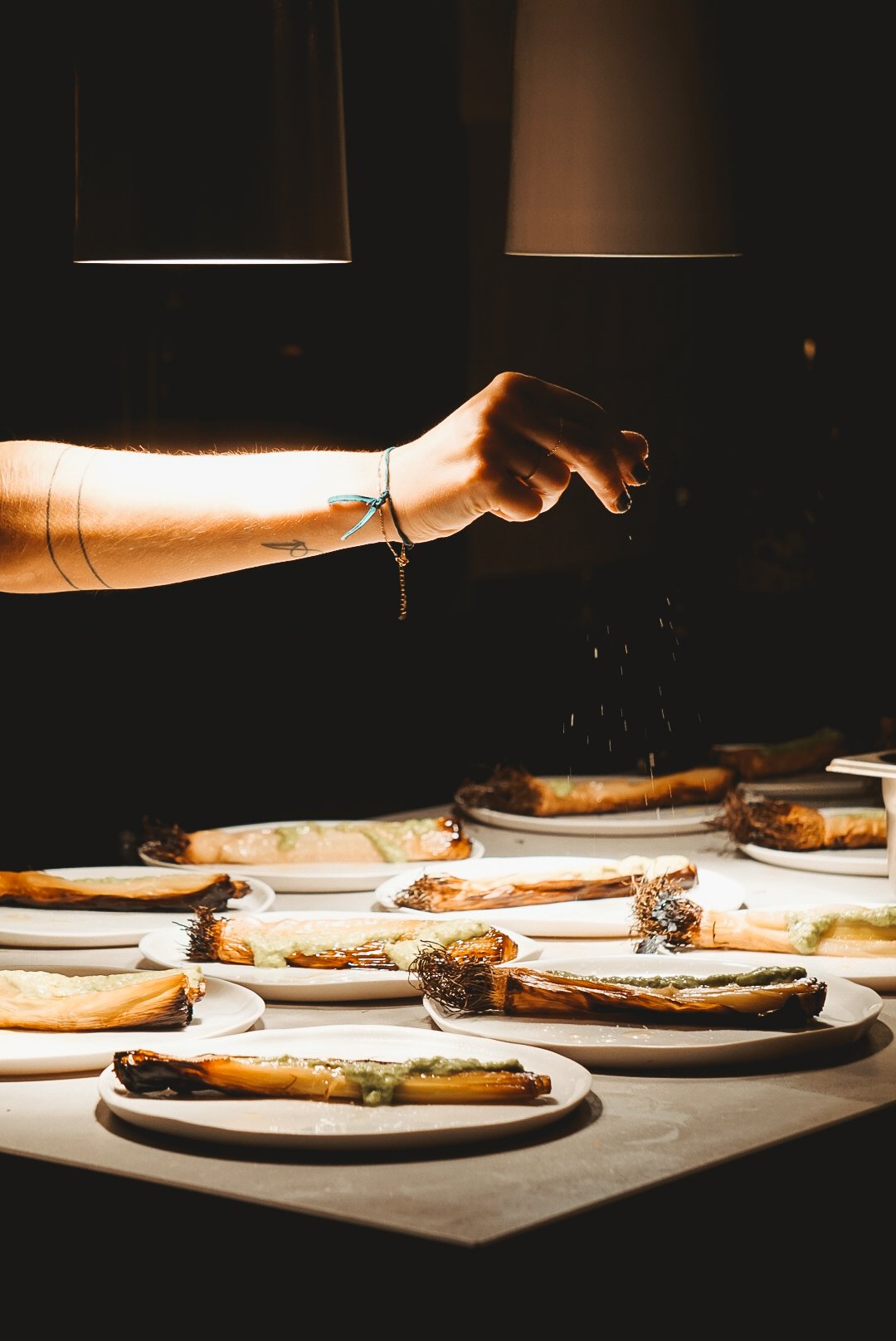



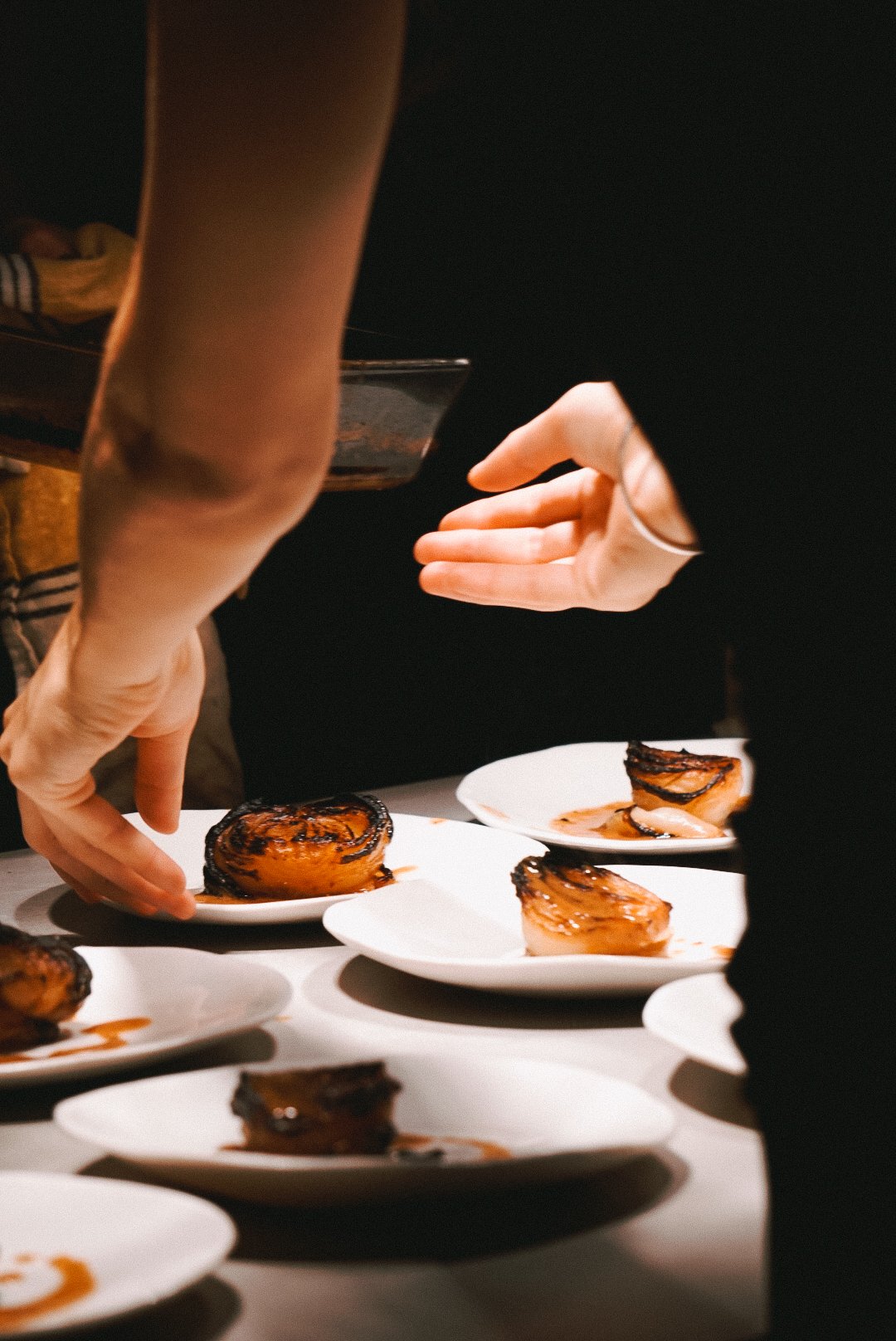

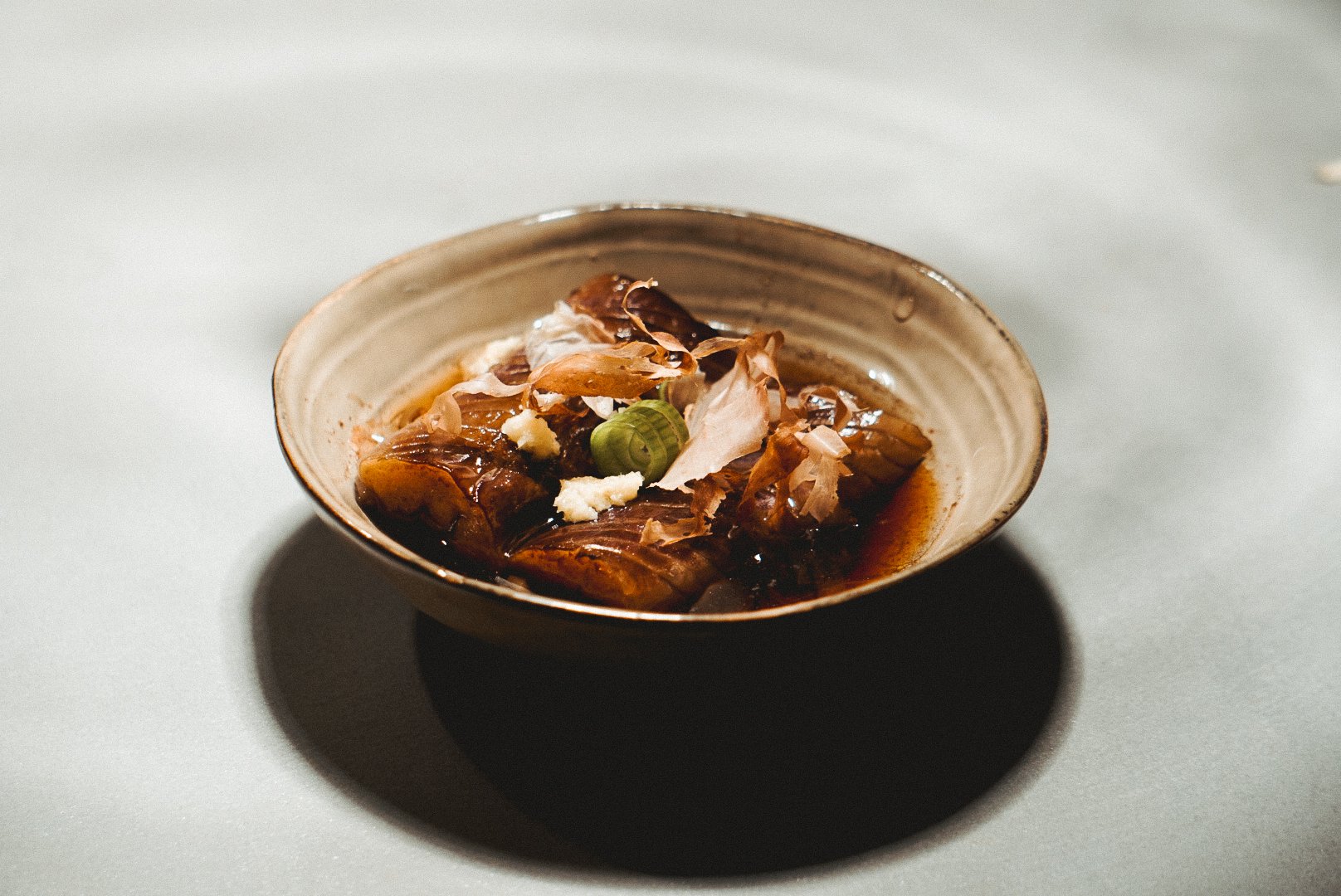




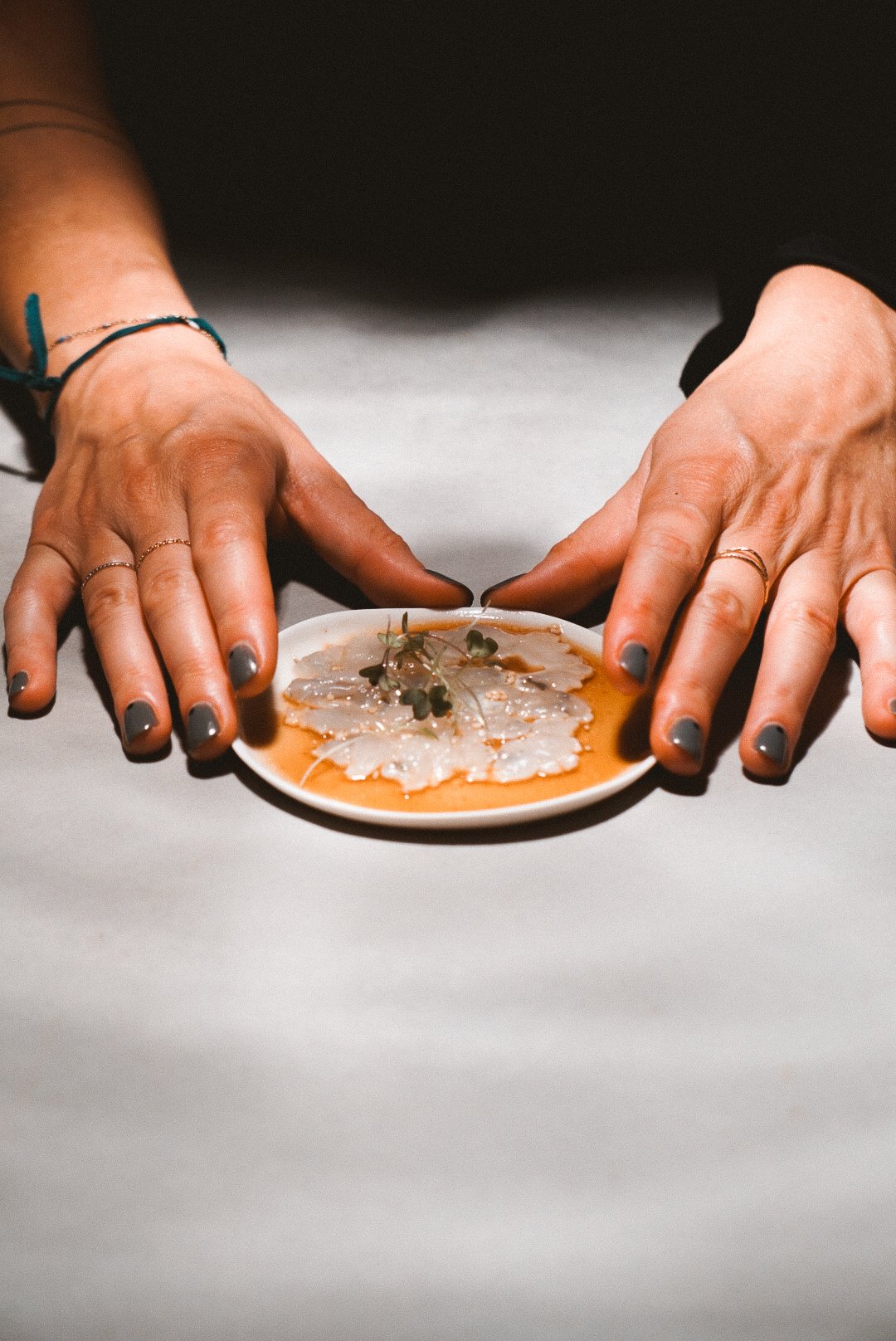
CHAPTER 2 : L’ART DE L’ATTACHEMENT
How do deconstruct our fear to be bound
Love is what we all seek throughout our lives.
We long to love deeply and be loved in return for who we truly are. Yet without attachment, true love cannot exist.
Attachment is indeed an essential element of love. It represents the ability to emotionally connect with another person, to build deep bonds of affection and trust, and to share intimate and meaningful experiences.
When we are attached to someone, we feel a sense of security, support, and emotional closeness. This allows us to feel understood, accepted, and loved for who we truly are. Attachment nurtures a sense of belonging and creates stability within the relationship.
True love involves being open and vulnerable, letting someone into our lives, and sharing our deepest thoughts, emotions, and desires. This can only happen when we have a secure attachment, where we feel safe to express our needs and concerns, and where we trust that our partner will be there to support us.
However, it is important to note that attachment does not mean dependence on the other person or losing one’s individuality. On the contrary, healthy attachment allows both partners to grow and flourish as individuals while cultivating a profound and meaningful connection.
Attachment disorders are emotional and behavioral conditions that make social relationships challenging and disoriented due to unmet fundamental needs in childhood.
There are three types of insecure attachment: anxious, avoidant, and disorganized.
An adult with an attachment disorder may have low self-esteem, lack confidence, struggle with self-love, and find it difficult to love others unconditionally. These traits are often at the root of emotional dependency and personality disorders.
This is where I come in!
Until I decide to pause my love life and recenter on myself, I have lived most of my romantic relationships with anxious attachment, often falling into emotional dependency. I accepted the unacceptable and replayed toxic, violent romantic scenarios to avoid being alone at any cost.
So, how do we dismantle the fear of abandonment? How do we overcome the fear of attachment?
The fear of attachment in adults, also known as attachment avoidance, is a behavioral pattern where a person experiences anxiety and mistrust toward intimate relationships, often avoiding deep emotional commitments. This fear can stem from various factors, such as past unsatisfying relationships, trauma, abandonment, or neglect during childhood.
Those with a fear of attachment may exhibit avoidance behaviors such as maintaining emotional distance, avoiding emotional intimacy, fearing long-term commitment, and prioritizing independence. They may also distrust others, feel vulnerable when close to someone, and struggle to express emotions.
This fear often creates a vicious cycle in relationships, as individuals with attachment avoidance tend to attract partners seeking greater intimacy, leading to frustration or rejection. This dynamic can result in unstable, unfulfilling, and often cyclical relationships, where the avoidant individual sabotages the relationship as soon as it becomes too close or committed.
In this episode, I am a Geisha.
Geishas are Japanese female artists with a long history and an important place in traditional Japanese culture. They are often associated with beauty, grace, and elegance.
Geishas are renowned for their artistic talents, including dance, singing, music, poetry, and traditional Japanese games. They are companions in conversation, offering their clients a unique cultural experience by sharing their artistic skills, charm, and knowledge of traditional Japanese culture.
Shibari is a Japanese art form involving tying and binding a person’s body with ropes to create intricate, aesthetic patterns. While Shibari can be practiced purely for artistic or aesthetic purposes, it is also used in the context of romantic and sexual relationships.
In romantic relationships, Shibari can serve as a form of exploration and expression of emotional attachment between partners. The act of tying and being tied can symbolize trust, vulnerability, and shared intimacy, reinforcing feelings of safety and emotional connection within the relationship.
Shibari requires clear communication and mutual trust between partners. It often involves discussions about boundaries, desires, and expectations beforehand. This open communication fosters a better understanding of each other’s needs and preferences, strengthening the emotional bond.
Additionally, Shibari can allow individuals to experience intense physical sensations, feel present in their bodies, and let go. By surrendering to the ropes and accepting being bound, one can reach a state of release and mindfulness, deepening the connection with their partner.
Available to guests:
Various types of whips and toys
A Shibari couple available for guests
A live Shibari performance
A curated menu
A themed discussion during dinner
Erotic poetry




